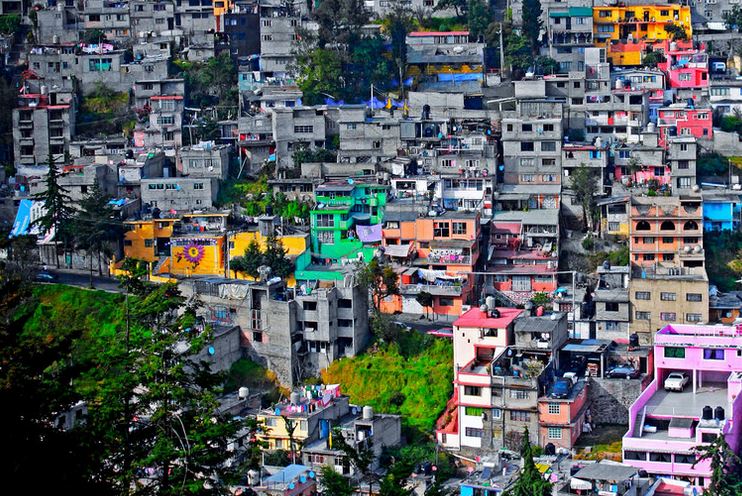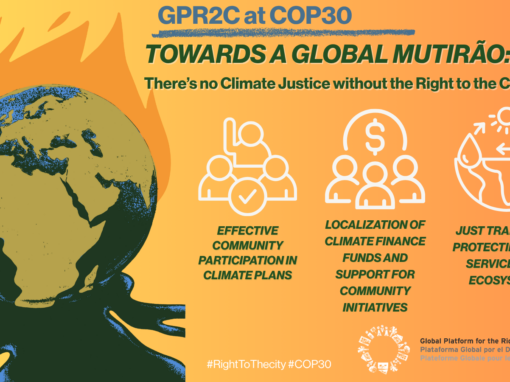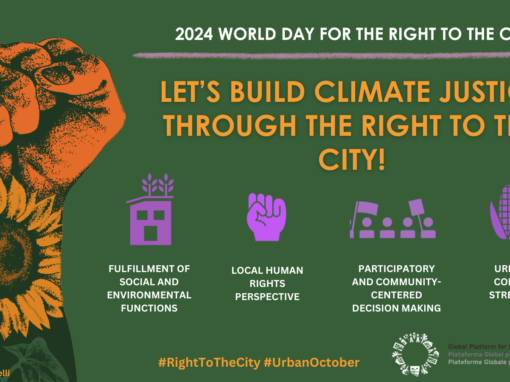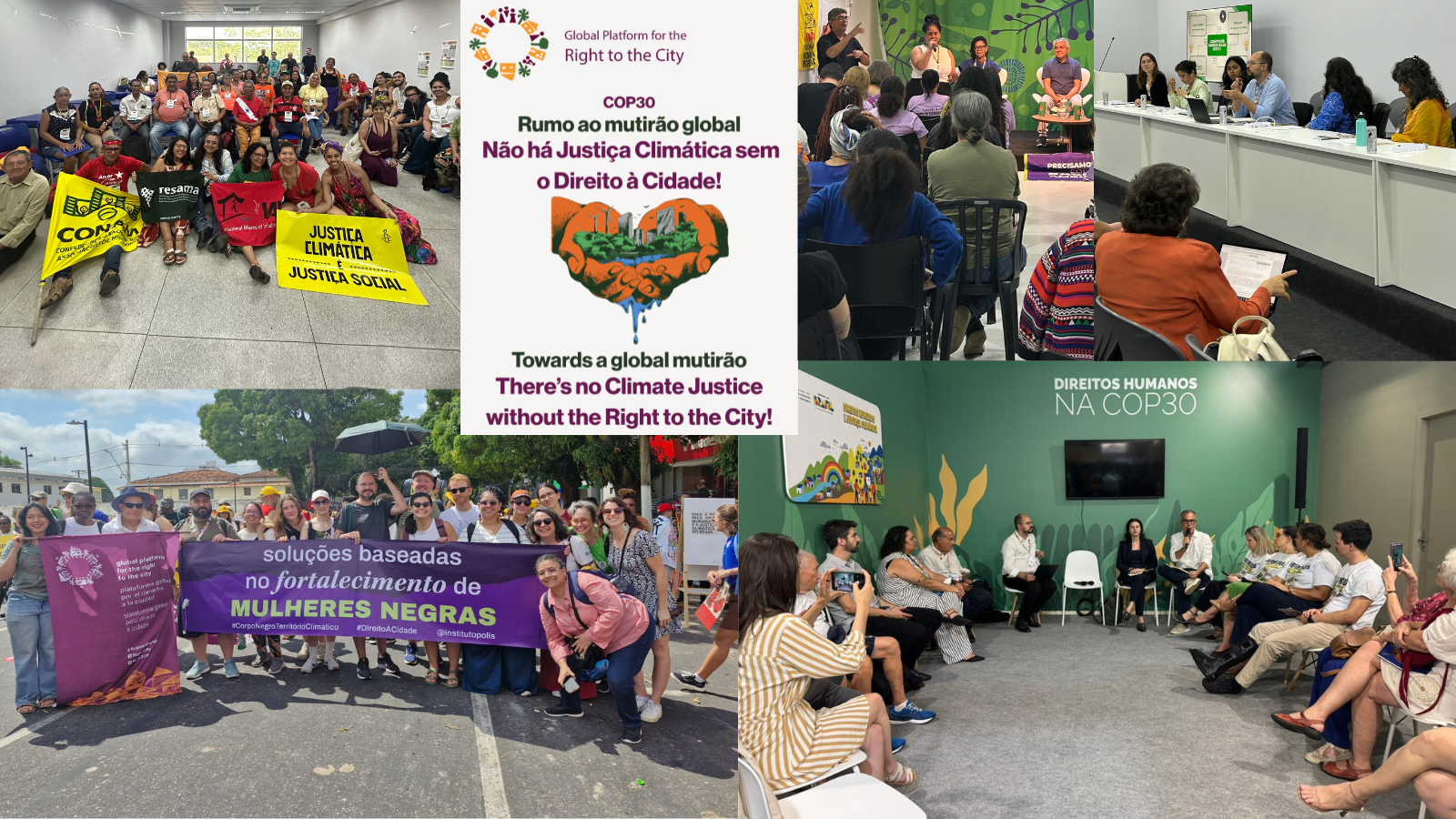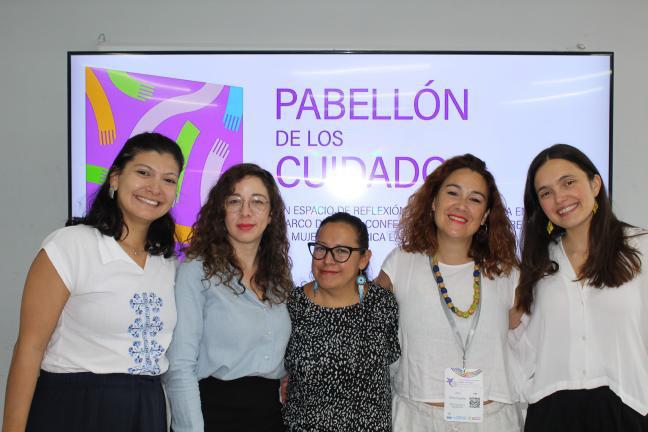Rafaella Lima
Alexandre Apsan Frediani
Barbara Lipietz
Introduction
How will the Right to the City be incorporated into Habitat III? How will Habitat III remain accountable to the commitments of Habitat I and II and build new commitments towards more just and inclusive development? To begin to answer some of these questions, the Bartlett’s Development Planning Unit (DPU) at University College London (UCL) collaborated with Habitat International Coalition (HIC) and the latter’s working group focused on Habitat III. The first stage of this involvement took the form of research to analyse the production of national reports for Habitat III, which, after being submitted by national governments, are intended to feed into the “New Urban Agenda.” The aim of this research was to assess both the process of national report production as well as the content of a selection of draft national reports, looking at civil society involvement as well as how the Right to the City is represented.
This research ultimately concluded that Habitat III reporting processes have been quite limited in terms of civil society engagement, not least because of a lack of robust guidelines coming from UN-Habitat. Still, civil society groups have initiated some mechanisms that may prove to expand the space for meaningful participation of social actors. This article will provide an overview of the research framework and findings, along with some of the debates arising from discussions at the World Social Forum in Tunis and the second Preparatory Committee meeting in Nairobi, where this research was shared.
Developing a “Right to the City” framework
In February and March 2015, DPU in collaboration with HIC conducted research into the national reporting process in eight countries, conducting interviews with people in each country involved in the Habitat III process as well as looking at four draft national reports that were publicly available. In order to analyse the process of Habitat III national reports, we developed criteria rooted in Right to the City principles with which to assess both the process and content of reports.
National Reporting Processes
The guidelines from UN-Habitat outlining the production of national reports were quite limited in terms of civil society participation—encouraging involvement of civil society but not providing any guidelines for this involvement to take place. Therefore, we looked to guidelines provided by other UN agencies—particularly FAO and UNEP who have developed frameworks for civil society engagement, to serve as a basis for our process framework. The below are just some criteria to foster a more inclusive and just engagement with civil society.
- Participation in the national reporting process
This asks in what way civil society groups are involved in the reporting process–for example, if they are involved in decisions around what the content of the report should be, or if they are merely consulted at a later stage, etc. This looks at whether there is a participatory space that respects diverse voices and knowledges and creates space for the voices of marginalised groups, but also whether there is the possibility for civil society groups to have a meaningful impact on the national report and in decisions related to Habitat III in their country.
- Balanced civil society representation
This asks whether there is a diverse representation of civil society members represented in the national reporting process, in terms of social identity (gender, age, ability, etc.), geography (inhabitants of different areas in the country including urban/rural, inner-city and peripheral areas, different municipalities), and groups (representatives from different types of groups such as social movements, NGOs, academia, etc.). FAO’s model dictates that the following must be present for balanced civil society representation: 75% of all constituents, 50% women, one third youth, 75% of all regions concerned, and diverse types of organisations (FAO).
- Transparency and accountability for mutual benefit
This refers to the extent to which the Habitat III process is transparent, whether a record is made of meetings and events, and whether relevant documents are made easily accessible. It also asks whether the process is accountable to those involved and commitments are followed through.
- Continual learning and improvement on current participation processes
This asks whether there is a commitment to ensure conditions are in place that facilitate meaningful participation of civil society groups, and if there is a willingness to learn and continually improve on current participation practices.
Process Findings
It became clear from the countries studied that “participation” when initiated by government was mostly in the form of consultative meetings, workshops or forums. Most processes were weighted towards urban areas or capital cities where meetings took place; rural groups were not very represented and it is unlikely that very marginalised groups would have access to these spaces. In addition, national reports often seemed to be heavily “bureaucratised” with political motivations dictating whether energy is spent towards this Habitat agenda or other international agendas (e.g., Post-2015 Goals, development finance, climate change). It will be difficult to draft a Habitat III Agenda without input from diverse groups, both urban and rural, and without strong political commitment at the national level.
As governments were the first point of contact for Habitat III, tasked with the preparation of national reports, the space with which civil society groups may influence the process is limited from the beginning. In addition, a lack of clear process framework from UN-Habitat has meant that processes have been highly centralised and bureaucratised, with no minimum standards for civil society participation. Still, within these conditions, civil society groups have, in some instances, initiated certain innovative practices that have involved a wider array of actors and building on new or existing participatory spaces, some of which have come to be, to some extent, officially recognised.
For example, in Chile, the national report was drafted by a civil servant and not widely shared. However, certain members of civil society were able to pressure the year-old National Council of Urban Development (Consejo Nacional de Desarollo Urbano), which has been charged with the Habitat III process. The Council then officially sponsored a forum held in late January to gain wider input on the report. Within this it was decided to produce an alternative report, not to replace the “official” one, but to address issues that participants felt were not included in the original report. However, it is still not known to what extent this input will be included in the documents ultimately presented to UN- Habitat. The challenge remains in how and if participatory spaces like these will meaningfully translate to the ultimate Habitat III Agenda.
National Report Content
The criteria for assessing the content of national reports were drawn largely from the World Charter on the Right to the City, developed by the Global Platform on the Right to the City, as well as from discussions between HIC members and DPU in this period of research. Though there are countless ways to interpret the Right to the City and these are not static concepts, the criteria we came up with are outlined below:
- Social function of land and property:
- Management of land and real estate speculation to ensure redistribution of benefits based on principle of equity: prioritising collective goods over private interests;
- Recognition of the use value of land and property towards equitable outcomes.
- Right to the Social Production of Habitat:
- Recognition and support of community-led/people-led housing;
- Right to adequate and secure housing, including the recognition of diverse types of tenure.
- Full exercise of citizenship and democratic management of the city:
- Right to inclusive participation that takes into account differing abilities and unequal power relations, creating space for the voices of marginalised groups;
- Right to meaningful participation where constituents are able to affect policy and planning as well as modes of production.
- Right to a just economy
- Recognition and valuing of different types of work and economies (e.g., informal, care, and solidarity economy);
- Redistribution of economic output (e.g. taxation going towards benefits) as well as input (e.g. mode of production), in a manner that absorbs labour and provides decent work.
- Right to a Healthy Environment and to Equitable and Sustainable Development:
- Reduction of risk (including environmental and physical risk/safety);
- Protection of the commons, including valuable natural areas and historic/cultural heritage;
- Equitable management of environmental commons/ resources.
- Spatial justice:
- Equitable distribution of environmental goods, e.g., good-quality services and public spaces, and equitable prevention of environmental risks and hazards;
- Right to inclusive public transport and urban mobility;
- Confronting socio-spatial segregation.
Content Findings
All of the four national reports examined display a certain degree of understanding and recognition of some Right to the City principles. All four reports examined acknowledge the importance of a healthy environment and generally acknowledge the importance of inclusive “participation”, though this is not always fully defined. South Africa’s draft national report interestingly recognises the social function of property, Mexico’s report states the need to limit speculation of land and property.
However, concrete methods to address associated problems or even clear principles that might be suggested for a “New Urban Agenda” are not clearly laid out. While some of the reports state the need to address entrenched socio-spatial segregation, there are few elaborated instruments that could adequately address this problem. Some points of the reports seem to be contradictory, especially between stated needs for more equitable cities on the one hand and the market-driven approach to urban development on the other. For example, Mexico’s report explores more than once the spatial segregation of different income groups, but the urban economy section is focused on the need for cities to be competitive/engines of economic growth. In other words, there is limited recognition of market forces in reproducing socio-spatial segregation and limiting the enactment of the Right to the City.
This must be brought back to the guidelines provided by UN-Habitat itself. While detailed, the guidelines are largely a checklist covering topics that should be included in the national report. They do not ask for substantive measurement of achievement of Habitat II commitments, nor do they ask what instruments will be used to implement new possible commitments. The mainly descriptive guidelines and lack of serious reflection on Habitat II compromise the potential for substantive engagement leading to binding agreements at the international level to effectively realise the Right to the City.
World Social Forum
In March 2015 the World Social Forum took place in Tunis with thousands of participants from around the world. DPU participated in events organised by HIC and other groups fighting for rights to housing internationally. These events provided space to discuss how Habitat III can be used as an opportunity to further mobilise towards these rights and the Right to the City specifically. There were stories shared by activists from Morocco to Belgium to Taiwan to Cameroon, about building movements for land and housing rights, fighting evictions, and understanding rural-urban linkages. It is clear that concepts like the “Right to the City” and the “social function of land and property”, are gaining ground and that movements in various places are finding meaning in these principles.
Few participants were surprised by the DPU-HIC research showing the limited space for civil society engagement in national reporting for Habitat III. Those who had been involved in Habitat I in Vancouver in 1976 affirmed that this space has narrowed since then. During the discussions, some groups seemed eager to find a way to engage in Habitat III, not to be left out of the process, while others seemed suspicious of this UN process that has encouraged civil society participation but has not taken active steps to ensure civil society groups are included—wondering whether it is worth expending energy towards this process at all. Others suggested that whether or not civil society groups were able to participate directly in Habitat III, there should be alternative activities organised while in Quito, not only to further mobilisation across civil society groups, but also to respond to the repercussions that such a “mega-event” like Habitat III is likely to have in Quito itself.
There was no consensus on how it might be possible for civil society to have a unified approach as to engaging (or not engaging) with Habitat III. Discussions at the World Social Forum also highlighted the crucial question of who actually constitutes civil society, especially considering that many groups will not have the resources to actually travel to Quito in October 2016.
PrepCom 2 in Nairobi:
In mid-April was the Second Preparatory Committee meeting at the UN compound in Nairobi, in which members of DPU and HIC also participated. The limited opportunity for civil society engagement at the PrepCom was manifested in the form of “side events” independently organised by different organisations and also taking place on the UN compound. One side event in which HIC and DPU took part was entitled “Civil society and local government’s expectations for Habitat III”, and represented a cross-sector dialogue of civil society and local government networks with national authorities and UN agency representatives.
Prepcom 2 was an opportunity to learn more about the Habitat III process as a whole. After our intensive research into the production of national reports, it seemed clear that national reports were, after all, not going to be as strategic a component of Habitat III preparations as originally intended, and were barely mentioned in the events attended by members of DPU. Instead, another key focus seemed to be the newly mooted Issue Papers and Policy Units (http://unhabitat.org/issue-papers-and-policy-units/) that are to feed more directly into the ultimate “Urban Agenda”. But these units are limited to government representatives and select policy experts, with little opening for outside civil society input. Interestingly, one Policy Unit is focused on the “Right to the City”, though this seems to be more in the sense of social inclusion rather than a more robust definition of this right.
In addition, regional reports are to be prepared in advance of the third PrepCom. These follow a different production process to the national reports, as they are driven mainly by regional economic commissions such as the UN Economic Commission for Africa. One commission representative explained in a side event focusing on regional reports that their approach was to ask member-states to fill out a questionnaire to then be fed into the regional report. In other words, in some cases the regional reports seem to follow a parallel process to the national reports, and opportunities for civil society input at the regional level are not clear.
While the process behind the production of national reports was quite limited in encouraging and even allowing civil society engagement, it seems that room for participation in other Habitat III mechanisms—specifically regional reports and policy units—is narrower still.
Next steps
The DPU together with the HIC Habitat III Working Group have prioritised the need to engage in activities that can address two simultaneous needs: on the one hand, attempting to influence the production of the “New Urban Agenda” by targeting the regional report process; on the other hand, continuing to support the activities of transnational civil society alliances. One possible path forward to respond to regional reporting would be to coordinate alternative regional “dossiers” that bring together major issues at the regional level relating to the Right to the City that are unlikely to be addressed in the official regional reports. It is also hoped that this would feed into current activities of the Global Platform of the Right to the City, as well as to facilitate further transnational alliances between civil society groups. In this sense, civil society groups may be better equipped to engage in global decision-making processes beyond the Habitat III conference in itself, looking forward to Habitat III implementation and other international frameworks that are likely to shape urban policies
Finally, civil society groups are also responding to Habitat III as a mega-event, as the preparations needed to host such a large-scale international conference may result in displacements and reinforcing social-spatial inequalities in Quito. The DPU therefore aims to support these kinds of engagements by contributing to debates on the interaction of such mega events with the Right to the City.
Thus we view Habitat III not as an end in itself but as an entry point to support further global actions towards the Right to the City.
For more information on the DPU-HIC collaboration and to download the original report: https://www.bartlett.ucl.ac.uk/dpu/habitat-III


